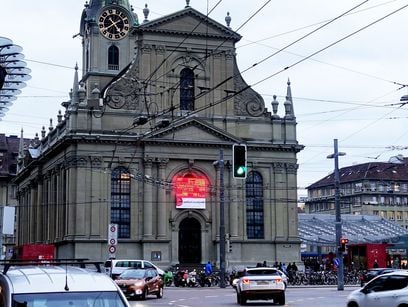VCS has installed a display screen in the centre of the capital, Bern, to draw attention to the problem of high levels of nitrogen oxide in the air caused by heavy traffic, according to a news release.
The display turns red as soon as the level of the gas NOx in the air passes the year average of 30 micrograms per cubic meter. A green light indicates an emissions reading below the European limit.
The display screen has been installed outside Bern railway station in an area of dense traffic.
The actual emissions are measured 200 meters away at the Bollwerk measuring station operated by the Federal Office for the Environment.
According to the VCS, 22,000 people work in this “red district” of Bern. A further 200,000 people using the railway station are exposed to dangerous levels of the greenhouse gas every day.
VCS said that the situation in Bern was not unique in Switzerland and other cities also regularly measure unacceptably high emissions levels.
The poor air quality in many places has serious consequences for people’s health and the environment, it said.



 Please whitelist us to continue reading.
Please whitelist us to continue reading.